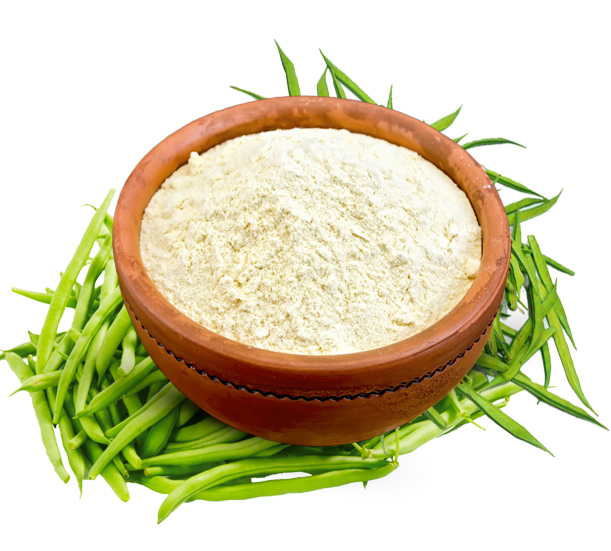
Guar Gum Powder
Guar gum is extracted from guar bean also known as Cyamopsis Tetragonoloba. The guar beans are principally grown in India where it accounts for 80% of global trade in guar products (Reuters report). Rajasthan in the northwestern part of India is the most important destination for guar gum processing.
Guar gum is basically a polysaccharide composed of galactose and mannose. The backbone is a linear chain of β 1,4-linked mannose to which galactose is 1,6-linked at every second mannose, forming short side branches.
Guar gum is used as an emulsifier, thickener, and stabilizer with a wide range of industrial applications, especially in food, cosmetics, and pharmaceuticals. Guar gum is very economical in comparison to other thickening agents. It shows almost 8 times the water thickening properties than starch. Major Industrial Uses are as follows:
FOOD, PHARMACEUTICAL AND COSMETIC GRADE
Guar Gum is widely used as a Thickener, Stabilizer, and Viscosifying agent in various Food, Pharmaceutical, and Cosmetic Applications.
OIL WELL DRILLING AND FRACTURING GRADE
Guar gum gives a better colloid thereby reducing water losses. It regulates the viscosity of mud solution and stabilizes the flow properties of the drilling mud.
TEXTILE GRADE
Guar Gum and its Derivatives are used in various Textile Applications including Sizing and Printing on various natural and synthetic fabrics including Cotton, Polyester, Nylon, Rayon, and blended fabrics.
EXPLOSIVES GRADE
Guar Gum and Oxidized Guar Gum are extensively used in the making of Slurry Explosives. It is also used as a thickener and gelling agent for slurry explosives.
PAPER GRADE
Guar Gum tends to improve Paper Strength and Evenness. It doesn't make an odd smell, so widely used in making Cigrattee Paper and High-Grade Paper.
OTHER APPLICATIONS
There are various Industrial Applications of Guar Gum like as Mining, Paint, Polymer, Effluent Water Treatment, Ceramic, Mosquito Coils, etc.